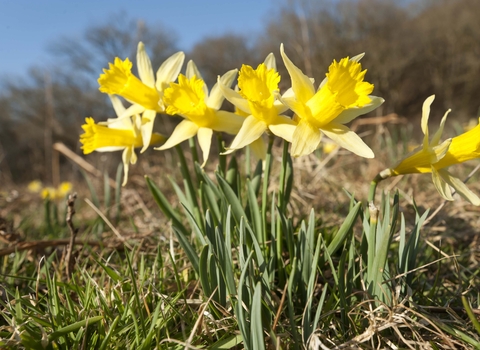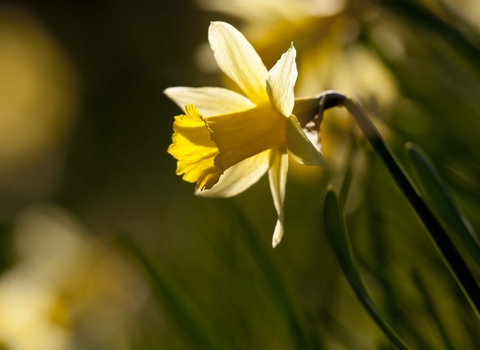
©Ross Hoddinott/2020VISION

©Ross Hoddinott/2020VISION
Wild daffodil
The bright yellow daffodils that adorn our roadsides and parks are likely to be garden varieties. Head to a woodland or damp meadow in North or South West England, or Wales, to see a true wild daffodil.
